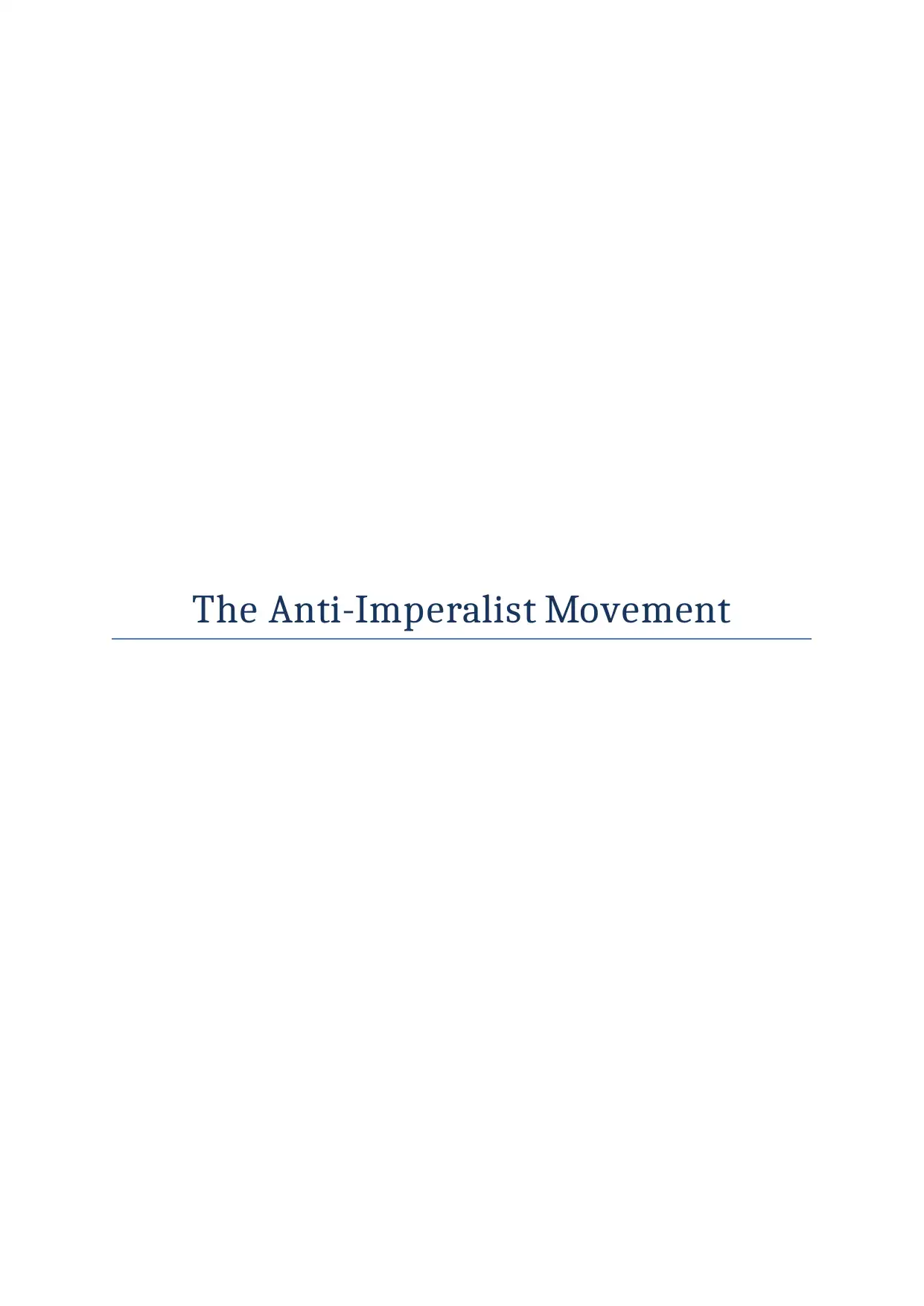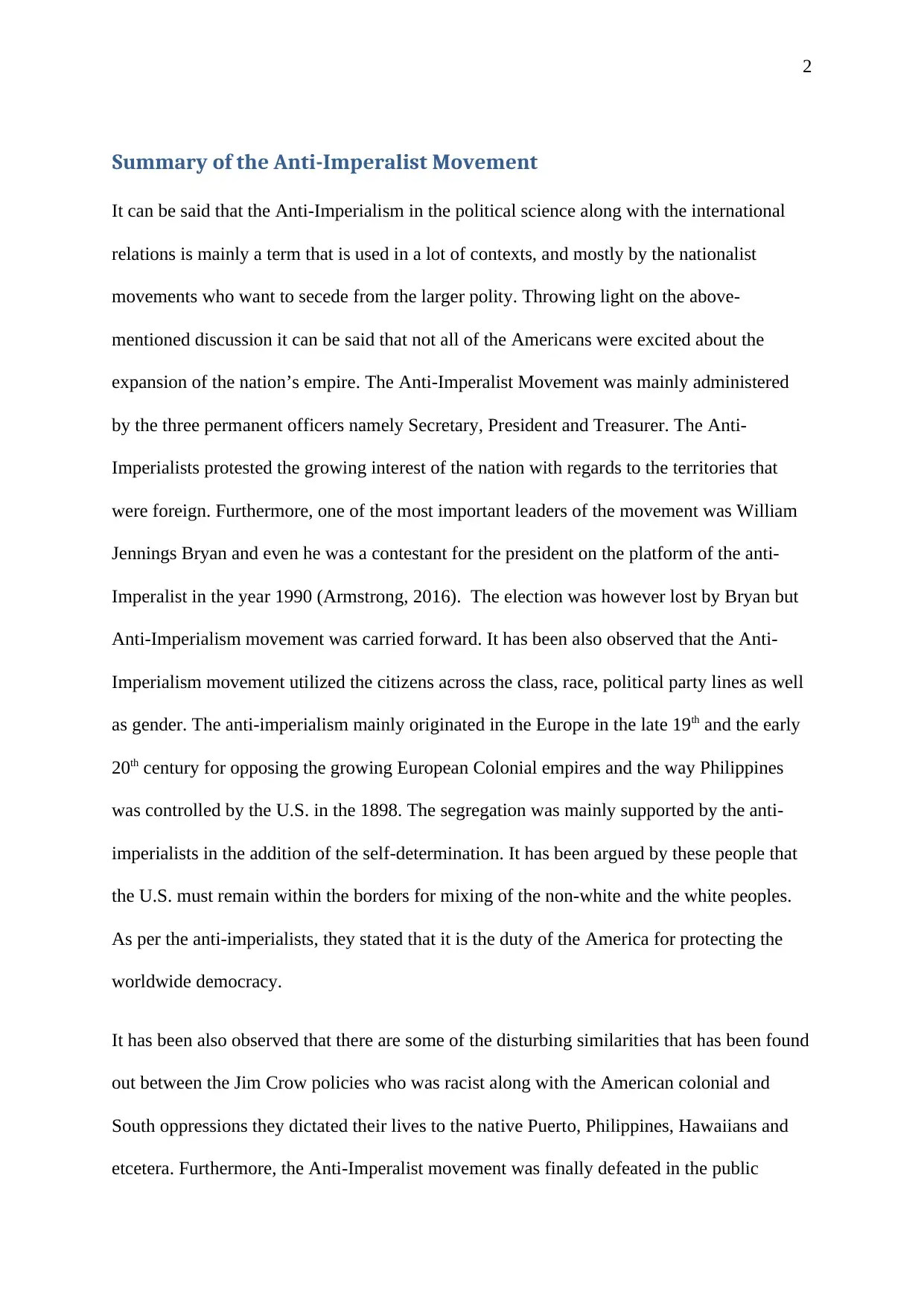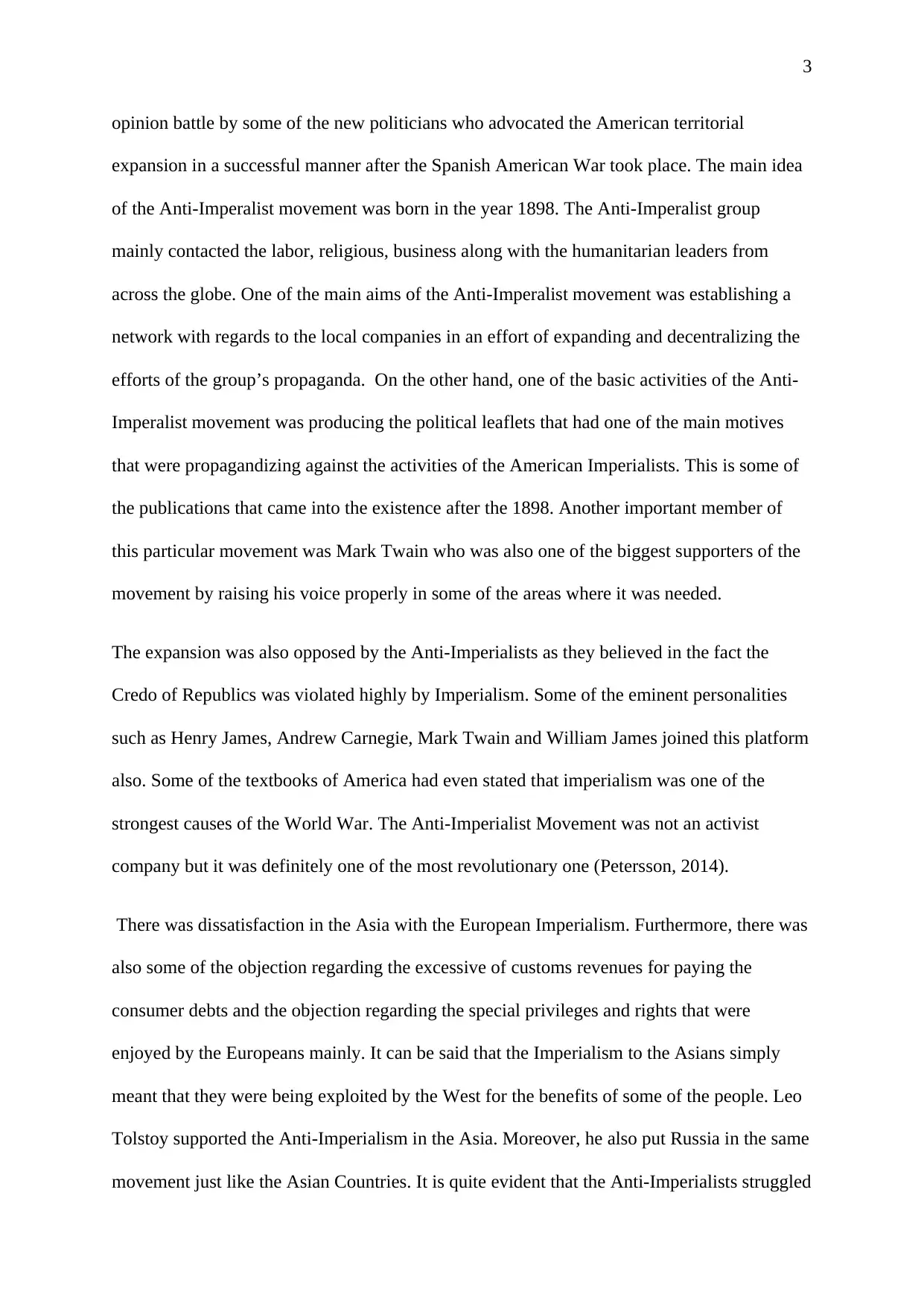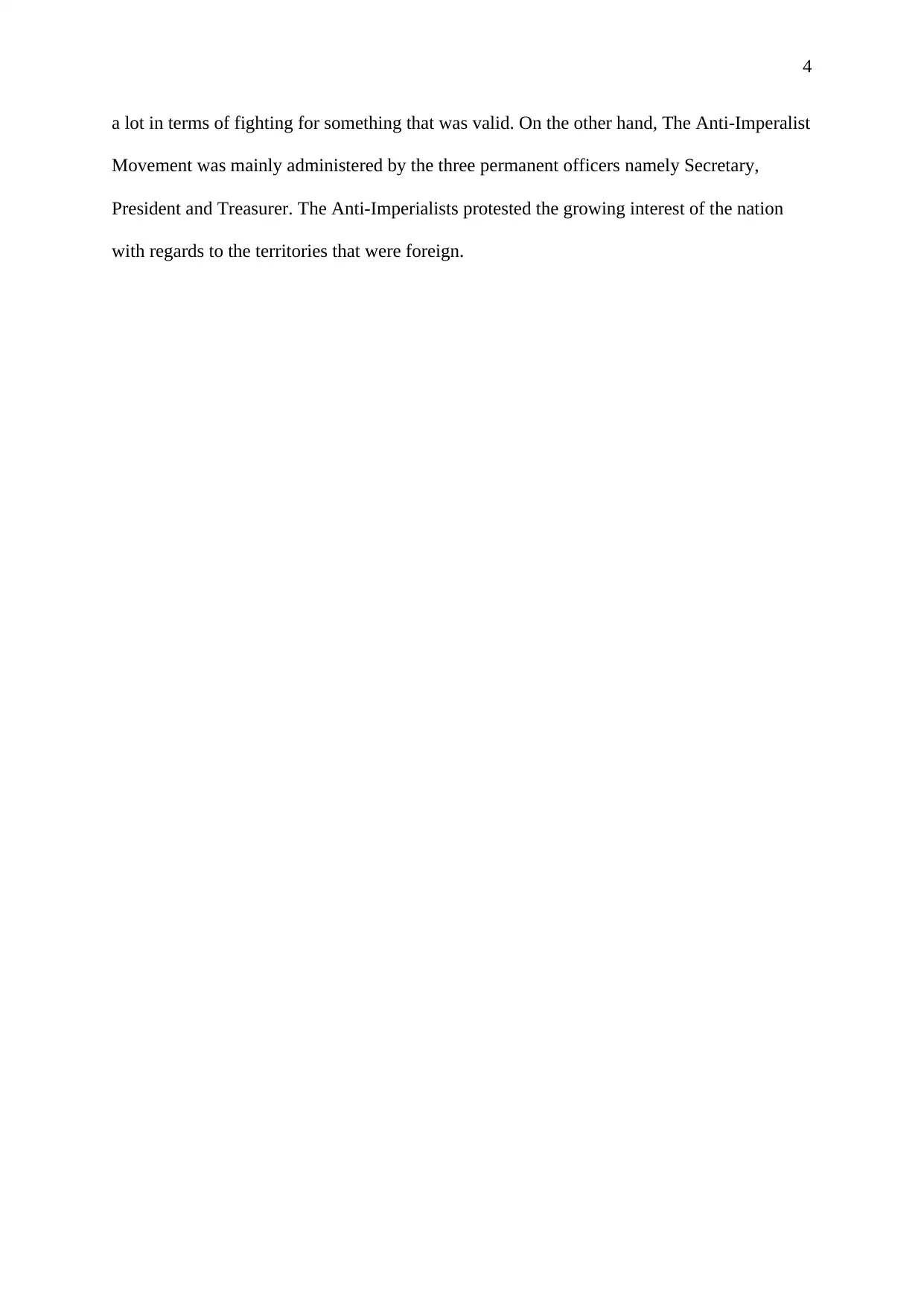Historical Context: The Anti-Imperialist Movement Explained
VerifiedAdded on 2019/10/01
|5
|870
|169
Essay
AI Summary
This essay provides a comprehensive overview of the Anti-Imperialist Movement, a significant historical phenomenon rooted in opposition to imperialism, particularly the expansionist policies of European powers and the United States. It highlights the movement's origins in the late 19th and early 20th centuries, emphasizing its opposition to European colonialism and American control of the Philippines after the Spanish-American War. The essay discusses key figures like William Jennings Bryan and Mark Twain, and the diverse coalition of individuals across class, race, and political lines that comprised the movement. It explores the arguments against imperialism, including violations of republican ideals and the detrimental impact on democracy. The essay also touches upon the movement's struggle against public opinion and its ultimate defeat, while also mentioning its connection to the Asian perspective of exploitation by the West. The essay concludes by summarizing the key aspects of the Anti-Imperialist Movement and its historical significance.
1 out of 5





